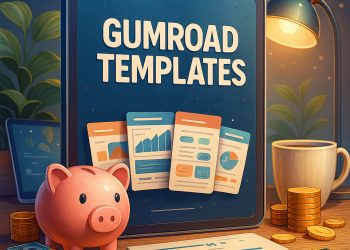Shopify Tutorial for Beginners 2025 – Step by Step
Setting up a Shopify store for the first time can seem intimidating — from choosing themes to customizing your storefront, uploading products, and configuring payments. This guide walks you through the entire process of creating a fully functional Shopify store from scratch, so you can confidently launch your online business.
Step 1: Sign Up and Activate Your Shopify Plan
Begin by signing up for Shopify. After creating your account, make sure to activate your 3-month extended trial by selecting a plan. For most new store owners, the Basic Plan is more than enough to get started. Fill in your payment information and complete the subscription setup. Once subscribed, you’re ready to start building your store.
Step 2: Choose and Install a Shopify Theme
Every Shopify store starts with a default theme called Dawn. If you want a different look, explore the Shopify Theme Store by going to Online Store → Themes → Visit Theme Store. You can filter by Free themes to avoid paid options. Browse through the library and preview demos to see which design fits your brand best.
Once you’ve found a theme, click Try Theme to add it to your library. From there, you can publish it directly or continue using the default Dawn theme, which is clean, flexible, and great for beginners.
Step 3: Customize Your Shopify Theme
Understanding the Theme Editor
The theme editor is divided into three parts:
- Navigation Bar: Lets you switch between different pages (home, product, blog, etc.).
- Content Sections: Located on the left, where you can add, rearrange, or delete elements like headers, banners, or product grids.
- Live Preview: Displays your actual storefront as you make changes.
Designing the Homepage
Start by removing large or unnecessary sections like oversized banners. Then click Add Section to include new elements. A slideshow is a great way to create a strong first impression. Enable auto-rotation, upload custom lifestyle images, and keep your text minimal — a short heading, a “Shop Now” button, and clean alignment go a long way.
Once your slideshow is complete, save your changes to preserve your progress.
Step 4: Add Products to Your Store
Go to Products → Add Product. Give your product a descriptive name and write a professional description. You can use tools like ChatGPT to help generate well-written copy. Upload multiple product photos, rearrange them as needed, and make sure the first one is your featured image.
Set Pricing and Inventory
- Price: Set your selling price (e.g., $19.99).
- Compare-at Price: A higher “original” price (e.g., $25) to show a discount.
- Cost per Item: Enter your production cost to track profit margins.
- Inventory Tracking: Enable quantity tracking to monitor stock levels.
Product Variants
If your items come in multiple sizes or colors, create variants (e.g., Small, Medium, Large). This allows customers to choose their preferred options directly from the product page. Once done, click Save to finalize the product.
Step 5: Organize Products into Collections
Collections help customers browse your store more easily. Go to Products → Collections and click Create Collection. You can organize products manually (for full control) or automatically (using smart conditions).
For example, create collections for Men’s, Women’s, and New Arrivals. Upload a representative image for each and add relevant products. Once finished, save your collections.
Step 6: Finish Customizing the Homepage
Return to the theme editor to display your products and collections:
- Unhide the Featured Collection section and link it to your New Arrivals collection.
- Add a Collection List section to showcase categories like “Men’s” and “Women’s.”
- Adjust the order of sections by dragging them to match your desired layout.
Step 7: Customize Your Header and Footer
Header Setup
Upload your logo by navigating to Theme Settings → Logo. Adjust alignment and choose a color scheme that matches your brand. Update your navigation menu by going to Content → Menus and replacing the default links with New Arrivals, Women’s, and Men’s collections.
Footer Setup
In the footer section, you can include elements like:
- Newsletter signup
- Social media icons
- Payment method badges
- Policy links (Privacy Policy, Terms of Service, Refund Policy, etc.)
Use the Manage Policies button to generate templates for standard legal pages, then link them in your footer menu. You can also remove the “Powered by Shopify” text via the Edit Default Theme Content option under your Online Store settings.
Step 8: Adjust Theme Settings and Fonts
In Theme Settings, upload a favicon (small logo in your browser tab), tweak your color palette, and update typography for a cohesive look. Popular fonts like Archivo and Archivo Narrow create a modern and professional aesthetic.
Enable subtle animations like the 3D Lift Hover effect for product images to give your store an interactive touch.
Step 9: Configure Store Settings Before Launch
Go to Settings in the lower-left corner of your Shopify dashboard and review the following sections:
- Store Details: Add your business name, address, and contact information.
- Payments: Set up Shopify Payments (recommended) or PayPal for seamless checkout.
- Shipping & Delivery: Configure domestic and international shipping rates.
- Taxes & Duties: Ensure compliance with regional tax regulations.
- Domains: Purchase or connect your custom domain for a professional URL.
- Languages: Translate your store to reach international customers.
Step 10: Publish and Preview Your Store
Once everything is set, preview your store on both desktop and mobile views to ensure proper responsiveness. When you’re satisfied, click View Store to go live. Your Shopify store is now fully functional and ready to start making sales.
Final Thoughts
Building a Shopify store from scratch might seem daunting, but once you understand the structure — theme, products, collections, and settings — it becomes an exciting and creative process. Keep your design clean, focus on high-quality visuals, and make navigation intuitive for your customers. With consistency and great branding, your new store can start generating sales quickly.
Good luck with your Shopify journey — and remember, every great online brand starts with one simple, well-built store.





































